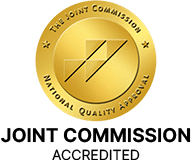If you struggle with anxiety, panic, or chronic stress, you’ve likely heard about the “fight or flight” response. But fewer people know about the role of the vagus nerve, the polyvagal theory, and how simple polyvagal exercises can help you return to a state of calm and emotional regulation.
This article breaks down how to apply the Polyvagal Theory—developed by Dr. Stephen Porges—to reduce anxiety, strengthen your nervous system, and improve your overall mental health.
Table of Contents
What Is Polyvagal Theory?
Polyvagal Theory is a neuroscience-based framework that explains how our autonomic nervous system responds to stress, safety, and social interaction.
The theory identifies three states of the nervous system:
- Ventral Vagal (Safe & Social) – calm, connected, regulated
- Sympathetic Nervous System (Fight or Flight) – anxiety, hypervigilance, stress response
- Dorsal Vagal (Shutdown/Freeze) – numbness, disconnection, collapse
By learning to shift into the ventral vagal state, we can experience greater well-being, resilience, and self-regulation in daily life.
How the Vagus Nerve Influences Anxiety
The vagus nerve is the longest cranial nerve and a central part of the parasympathetic nervous system—the system responsible for “rest and digest.”
When vagal tone (or vagus nerve responsiveness) is strong:
- Your heart rate and breathing slow down
- You feel safe, relaxed, and socially engaged
- You recover more quickly from stressors
Poor vagal tone, on the other hand, contributes to anxiety, chronic stress, and difficulty returning to baseline after a threat has passed.

Top Polyvagal Exercises for Anxiety Relief
Here are science-backed, polyvagal theory exercises that help stimulate the vagus nerve and promote anxiety reduction:
1. Deep Breathing (Diaphragmatic or 4-7-8 Breathing)
- How it works: Activates the parasympathetic nervous system, slows heart rate
- How to do it: Inhale 4 seconds → hold 7 seconds → exhale 8 seconds
- Why it helps: Promotes relaxation response, especially during high anxiety
2. Cold Water Stimulation
- How it works: Cold activates the vagus nerve via the diving reflex
- How to do it: Splash cold water on your face or use a cold compress on your neck
- Why it helps: Quickly brings the body out of sympathetic overdrive
3. Humming or Chanting
- How it works: Stimulates the vagus nerve through vocal cord vibration
- How to do it: Hum, chant “OM,” or sing slowly and deeply
- Why it helps: Shifts the nervous system toward ventral vagal engagement
4. Gargling
- How it works: Activates the vagus nerve by stimulating muscles in the throat
- How to do it: Gargle with water for 30–60 seconds a few times a day
- Why it helps: Improves vagal tone and oral-laryngeal awareness
5. Safe Social Interactions
- How it works: Eye contact, gentle tone, and facial expressions engage the social engagement system
- How to do it: Spend time with trusted people or pets; video chats also help
- Why it helps: Co-regulation with others signals safety to the brain
6. Vagus Nerve Massage (Neck or Chest Area)
- Gentle touch along the sternum or behind the earlobes can help calm the nervous system
7. Grounding and Mindfulness
- Focus on the present moment using techniques like:
- Naming 5 things you see
- Noticing your feet on the floor
- Builds awareness of your body’s signals and interrupts anxious loops
Why These Exercises Work: The Neuroscience
These exercises engage the ventral vagal system, allowing your body to exit the fight-or-flight response and return to a regulated state.

They also support:
- Improved mood
- Reduced physical symptoms of anxiety
- Better emotional regulation and decision-making
When to Use Polyvagal Exercises
Use these techniques:
- During panic or anxiety attacks
- After conflict or emotional overwhelm
- Before or after therapy (CBT, trauma recovery, etc.)
- As daily nervous system hygiene
Final Thoughts: Polyvagal Exercises for Anxiety
Polyvagal exercises are powerful tools for calming the nervous system, especially for people with trauma histories, mental health conditions, or chronic stress.
By regularly stimulating the vagus nerve, you can:
- Improve vagal tone
- Shift from dysregulated states to a sense of safety
- Build a more resilient and responsive mind-body connection
For best results, work with a clinician trained in polyvagal theory, trauma-informed care, or nervous system regulation.
Published on: 2025-06-04
Updated on: 2025-06-04



